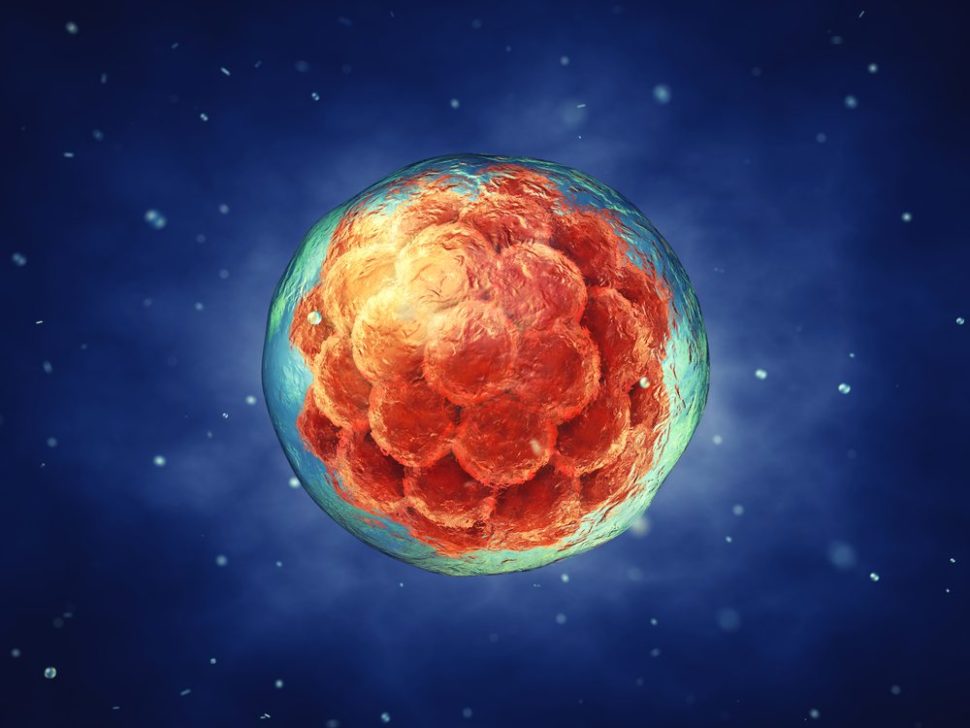Scientists are working on techniques that enable them to grow artificial embryos from stem cells, which would enable them to circumvent legal and ethical issues and get access to more funding.
Research on creating and modifying embryos promises many therapeutic applications, but some fear that the embryo would therefore be slated for destruction as a mere disposable lab material with all the signs of life but no legal rights or protections.
There are several legal and ethical restrictions that bog down the development of embryonic research, which are subject to a strict authorization and funding regulatory body.
Work on artificial human embryos is advancing.Click To TweetEmbryos, Stem Cells and the “Genetic Scissors”
Recent scientific advances have heated the debate around the use of human embryos in medical research.
The now famous gene-editing technique, CRISPR-Cas9, helps democratize research in gene therapy and regenerative medicine.
These “genetic scissors” have already been used to modify the genome of embryos and while the technique is still at its “embryonic” stage, it aroused fears because such experimentations “mess with” the hereditary heritage of humanity.
The possible applications of CRISPR-Cas9, and any gene-editing technique, to embryos and stem cells raises the risk of applying the tenants of pseudo-sciences like eugenics, or “babies à la carte”, to actually effective methodologies that could have negative effects on future diversity.
Can these techniques be accepted solely for therapeutic purposes, or do they, in every potential case, get used to satisfy parents’ desire to have children with the most “positive traits”?
Regulatory, Technical and Ethical Framework
The Convention on Human Rights and Biomedicine, which came into force in 1999, already put restrictions on such techniques through “a series of principles and prohibitions against the misuse of biological and medical advances.”
As it stands, 35 countries have signed, and 29 of those have fully ratified the convention.
Some states, like the U.S., UK, and China, where much of embryonic and stem cell research take place, have neither signed nor ratified the convention deeming it “too restrictive”.
In contrast, Germany, for example, deemed it “too permissive” and hasn’t ratified it either.
Researchers in the China, then in the U.S., have used CRISPR-Cas9 to edit the DNA of viable embryos. And yes, in all these cases, the embryos were destroyed after a few days.
At the moment, embryonic research remains highly supervised, subject to legal, technical and ethical control.
To be authorized, a research project must be scientifically relevant and serve a medical purpose. And once authorized, embryonic research is still restricted by time allotment.
The first successes of IVF (in vitro fertilization) raised a bioethical question: at which point is it no longer permissible to continue embryo development in the lab for research purposes?
Hence, the “14-day rule” in Embryology policy: in vitro embryo culture is limited to the two first weeks of development. The number of days is not random and is based on embryological arguments, such as: starting from the fourteenth day, the embryo begins to individualize, developing elements of symmetry and neural system.
Synthetic Embryology to Boost Research
Medical research must progress, especially in such promising fields as regenerative medicine and gene therapy.
And now, it is already possible to synthesize embryos from stem cells that on which researchers can keep experimenting.
After fertilization, a mammalian egg cell divides into stem cells which cluster into a “blastocyst”, an early embryonic structure. Apparently, these cells can reconstitute an embryo in vitro. Previously, scientists attempted to grow an embryo using only embryonic stem cells, but with little success.
Why?
The embryo needs other types of cells to coordinate its development.
Last March, researchers at the University of Cambridge announced they had succeeded in creating the first mouse artificial embryo using two types of stem cells taken from living mice.
The team used embryonic stem cells and extra-embryonic trophoblast stem cells, which are the origin of the placenta; together, they’d form an extracellular matrix that self-assembles into what looks like a natural embryo.
Thus, researchers were able to reconstruct the first hours of life, starting with the division of the first cell to the separation of the cells into two parts: one developed into a fetus and the other, a placenta.
The team is now pursuing the goal of using the same technique to grow human blastocysts that, if successful, would open the door to experimenting on (artificial) embryos beyond the 14-day legal limit.
Coaxing “Master Cells” Into lab-Grown Embryonic Structures
The first few weeks after fertilization is an early and critical stage in the embryo development that’s still mysterious. It’s during that stage that the “amniotic sac”, a rudimentary embryonic structure, develops.
Using donated human embryos, scientists are able to grow “amniotic sacs” in the lab, to use them in infertility research.
But now, a research team from the University of Michigan has for the first time grown such a structure starting with stem cells.
The U-M researchers managed to coax human pluripotent stem cells to grow into a structure resembling the amniotic sac.
Known as “master cells”, “pluripotent stem cells” can, under the right conditions differentiate to produce any type of cells in the body.
This new lab-grown embryonic structure, dubbed PASE (post-implantation amniotic sac embryoid), can develop into two distinct stable parts.
The master cells in the one part would develop into the placenta, and those in the second half would give rise to the embryo itself.
One of the problems with research on actual human embryos is that these embryos (donated via fertility clinics) might have been able to have a life if we gave them a chance. With the so-called “artificial” embryos, researchers still have to start with human “embryonic stem cells” which, again, given a chance, could have developed into an actual embryo.



















Comments (0)
Least Recent